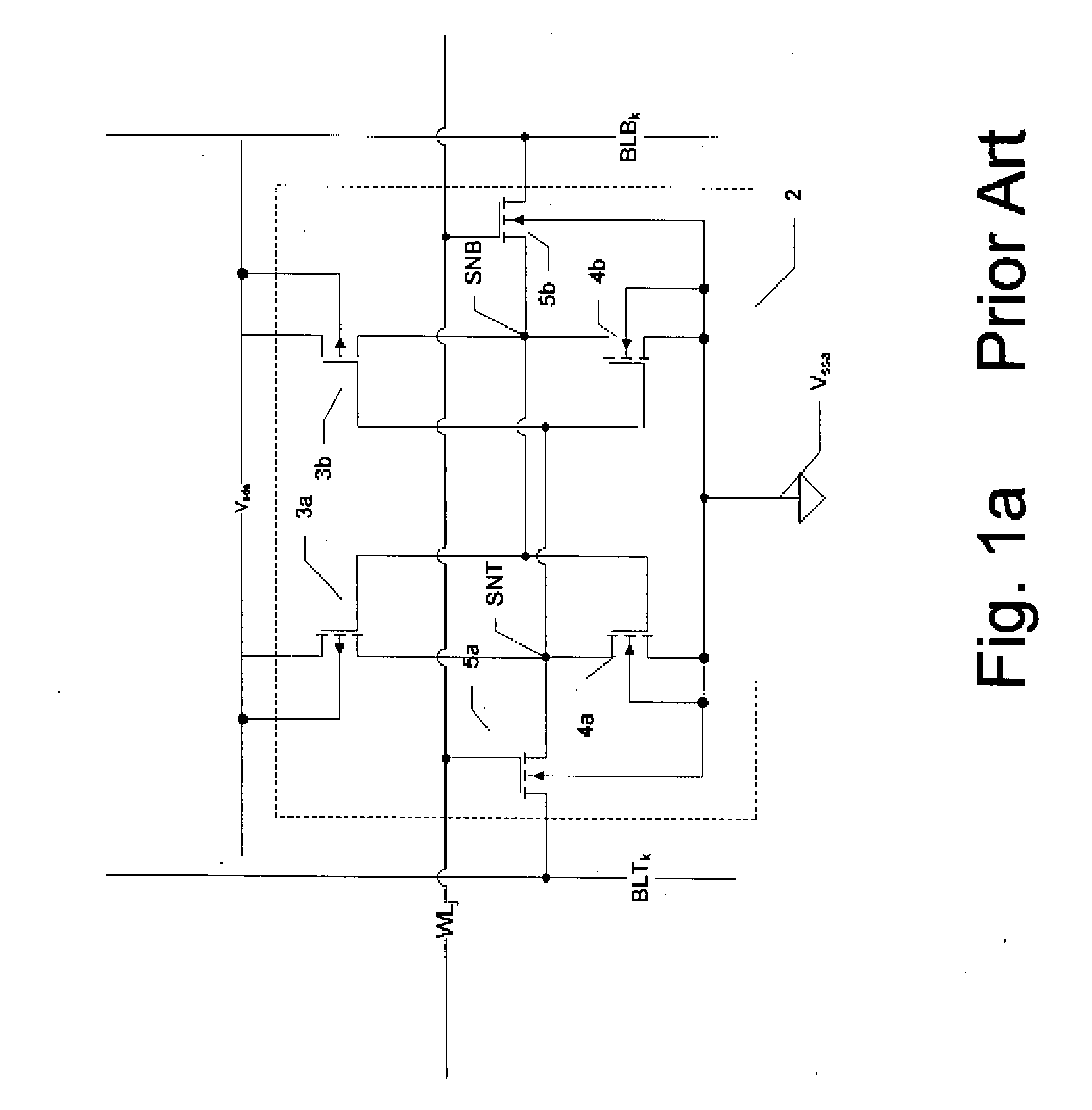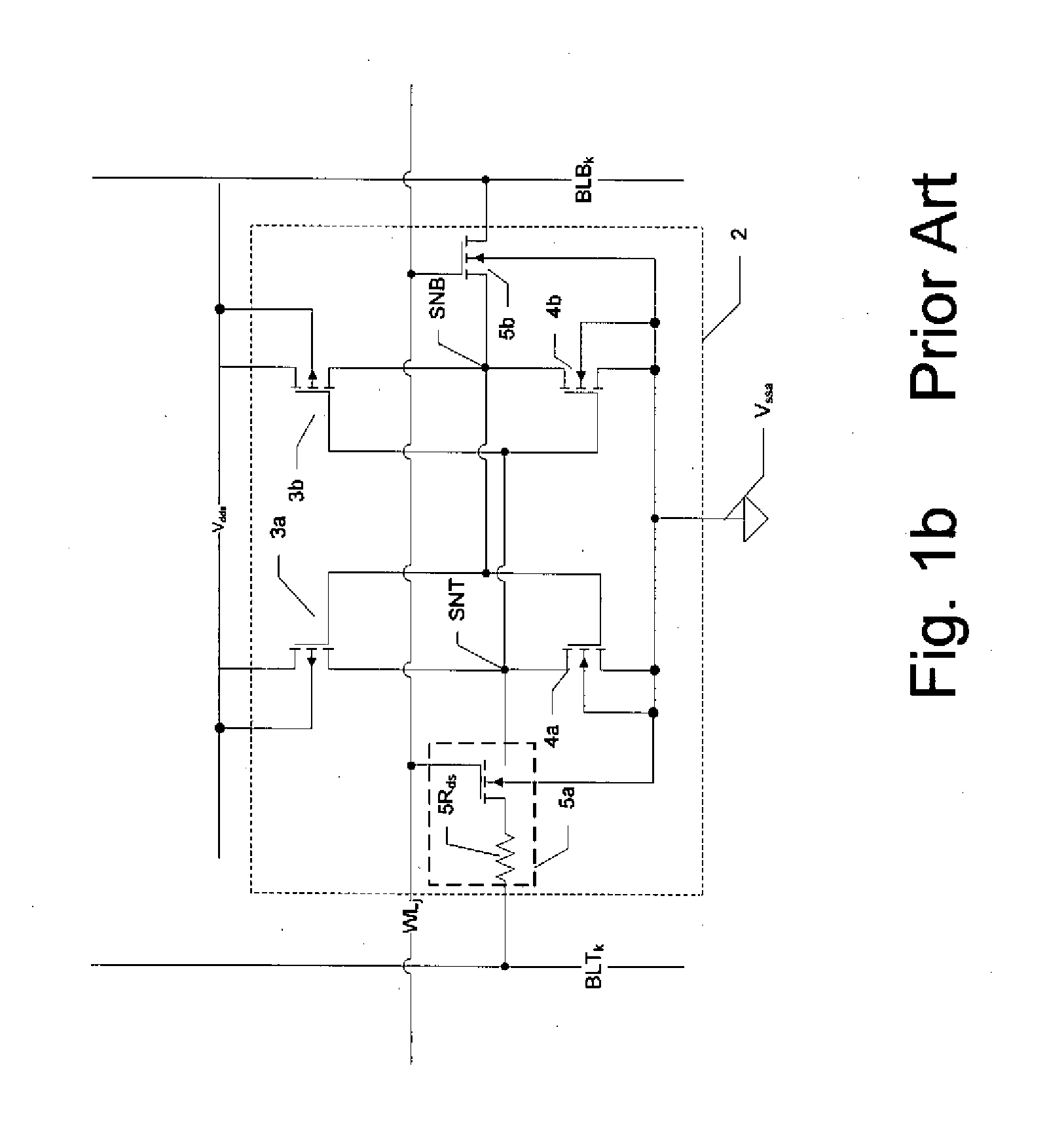Method of Stressing Static Random Access Memories for Pass Transistor Defects
a static random access memory and defect technology, applied in static storage, information storage, digital storage, etc., can solve the problems of increasing the likelihood of read and write functional failure, physical scaling of device size raises significant issues, and increases the variability of electrical characteristics, so as to efficiently distinguish vulnerable cells, without yield loss
- Summary
- Abstract
- Description
- Claims
- Application Information
AI Technical Summary
Benefits of technology
Problems solved by technology
Method used
Image
Examples
Embodiment Construction
[0034]This invention will be described in connection with certain embodiments, namely as implemented into a method of testing static random access memories, because it is contemplated that this invention will be especially beneficial when used in such an application. However, it is also contemplated that this invention will also be beneficial if applied to memories of other types, and to stand-alone and embedded memories in integrated circuits of various architectures. Accordingly, it is to be understood that the following description is provided by way of example only, and is not intended to limit the true scope of this invention as claimed.
[0035]FIG. 2 illustrates an example of large-scale integrated circuit 20, in the form of a so-called “system-on-a-chip” (“SoC”), as now popular in many electronic systems. Integrated circuit 20 is a single-chip integrated circuit into which an entire computer architecture is realized. As such, in this example, integrated circuit 20 includes a ce...
PUM
 Login to View More
Login to View More Abstract
Description
Claims
Application Information
 Login to View More
Login to View More - R&D
- Intellectual Property
- Life Sciences
- Materials
- Tech Scout
- Unparalleled Data Quality
- Higher Quality Content
- 60% Fewer Hallucinations
Browse by: Latest US Patents, China's latest patents, Technical Efficacy Thesaurus, Application Domain, Technology Topic, Popular Technical Reports.
© 2025 PatSnap. All rights reserved.Legal|Privacy policy|Modern Slavery Act Transparency Statement|Sitemap|About US| Contact US: help@patsnap.com



